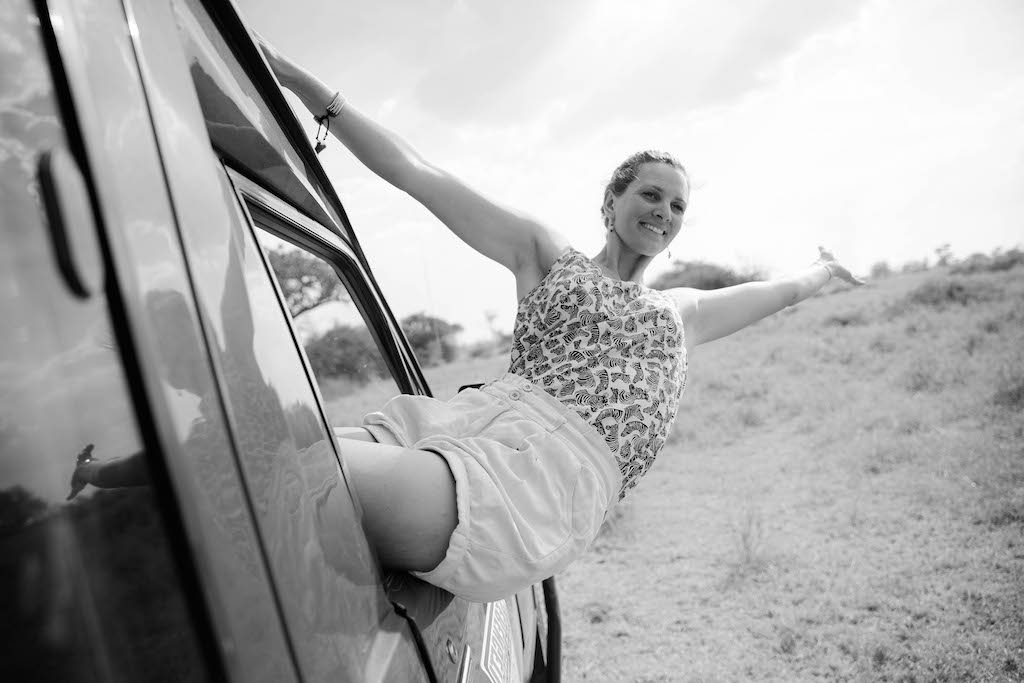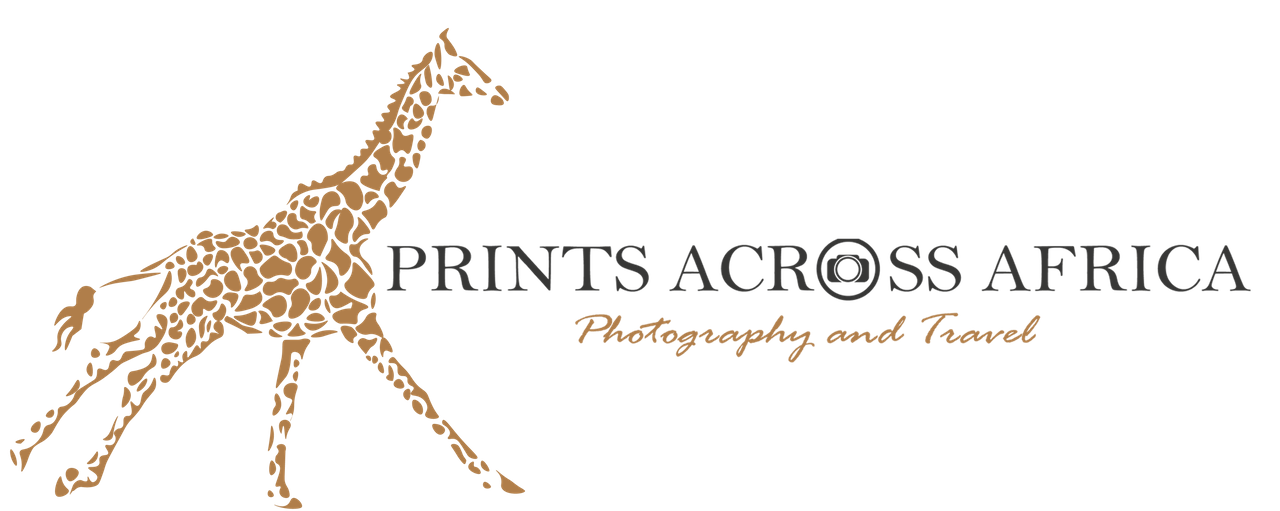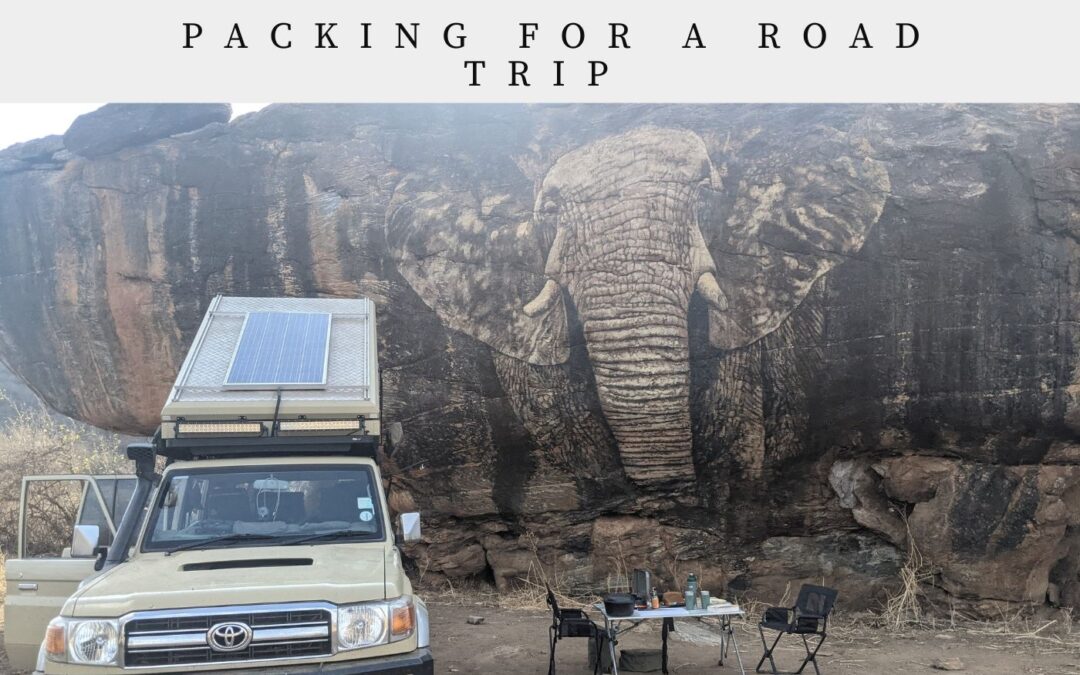
by Natasha Chapman | Sep 9, 2021 | Everyday life, Travel stories
So we have a trip coming up soon and we are in the process of packing. I thought this might be a good opportunity to go through what I pack and how we set up the car, what equipment we have for camping etc. Not because I think I am an expert at packing, but actually the opposite, I am notoriously bad at packing and I always overpack or forget something. Therefore, by going through the process of explaining what I am packing and why I am hoping it will help me to really think about what I have packed and hopefully not forget anything and not pack too much!
Before I get onto the packing let me tell you about the trip. We are starting at Lewa Wildlife Conservancy

We leave here on Saturday 11th September (2 days time). From here we drive to Il Ngwezi
Il Ngwezi neighbours Lewa, Borana and Lekurruki. Il Ngwesi covers 16,500 hectares and is home to the Il Lakipiak Maasai – ‘people of wildlife’. Il Ngwezi lodge is the only upmarket lodge owner and run by the community, the profits from the lodge help support the community in caring for the wildlife and protecting them against poaching. We are spending 3 nights camping at Il Ngwezi, going on games drives and walks etc. the next stop will be Reteti Elephant sanctuary.
This video says all you need to know about Reteti and why I am excited to go there:
http://
We are spending 2 nights in a new lodge still being finished at Reteti and then one moving on to see this place:
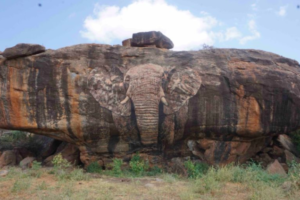
(photo by Lori Robinson)
After that we are heading to Mout Lotokitok, we will stay 2 nights to give us time to climb the mountain on one of the days.
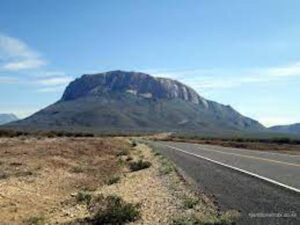
www.thekenyancamper.com
Our final destination will be camping in Samburu and exploring Samburu and Buffalo Springs. We will be here 4/5 nights before heading back down to Lewa and back home.
Click here to see our route virtually via Google Earth.

OK on to packing! As you can see the trip we are going to go on is very much a bush trip, there will be no fancy dinners, bars or clubs so that makes packing a bit easier. Therefore I will be packing practical clothes:
The packing will be listed in the following way; personal, camping, food, electronics, other
Personal Packing
- 1 pair of safari zip of trousers
- 1 pair of safari shorts
- 1 long dress (useful for travelling in)
- 1 pair of comfy long trousers for the evening
- 4 t-shirts (green, beige, khaki colour) avoid bright colours and dark blue (tsetse flies)
- 2 long sleeve tops for the evening for the evening
- 1 pair of running/exercise shorts
- 2 exercise tops
- 1 jumper
- 1 down jacket
- 1 kikoi/shawl (very useful to cover up when in villages)
- 1 scarf
- 1 visor, 1 safari hat
- underwear, bras, bikini
- quick dry towel
- hiking day bag
- sunglasses
[modula id=”280841″]
Shoes
- Hiking boots
- trainers
- Vellies
- sandals/flip flops/Birkenstocks
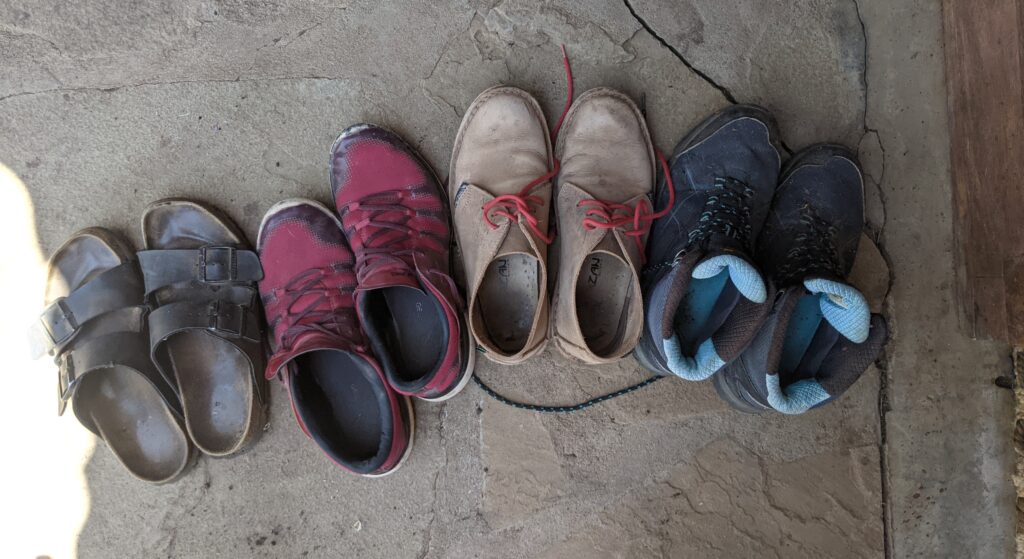
- toiletries – shampoo and conditioner soap bars, body soap, toothbrush, toothpaste, mouth wash, sunscreen, moisturiser, bug repellent, hair ties, deodorant, baby wipe

Camping equipment
- Folding table
- folding chairs x 2
- hammock x 2
- duvet, pillows, bedsheets,
- fridge
- kitchen box – cutlery, kettle, washing up basin, bottle opener, plates, bowls, pans ect
- gas stove
- water dispenser
- water tank
- potjie pit
- braai grid, braai stand
- groundsheet
- petrol tank (back up)
- high lift jack
- shovel
- blanket
- warning triangle etc
- jump leads
- compressor
Electronics
- torch
- head torch
- extension lead
- cables to charge phones, batteries etc
- kindle
- Camera plus all cables, hard drive, SD cards etc
- laptop
- battery bank
- an old ‘brick’ phone that lasts for days (very useful in the bush)
- Gps
- car battery back up
- speaker
Food
- tea, coffee, milk, sugar
- cereal
- yoghurt
- meat
- pasta
- tins; tomato, beans, chickpeas, coconut milk etc
- spices, salt and pepper
- snacks, breakfast bars
- meat
- bread
- rice, noodles
- fruit & veg
Other
- binoculars
- sunglasses
- hiking bag
- bird book/app on the phone
- first aid kit
- day rucksack/camel bag and bladder
- maps/download maps.me on your phone
- other useful apps: SASOL birds, Ioverlander, Lonelyplanet, Kingdom
- zip lock bags – useful when it starts raining
- money/load your phone with Mpesa
- yoga/exercise mat, skipping rope
- passport & driving licence
As you can see we don’t travel light when camping, we like to be comfortable when camping and have everything with us when we need it. For this reason, we take out the back seats of our land cruiser to give us more space and we have also made a few modifications to the car itself. A few things we have done are:
- installed a rooftop tent
- fridge in the back on a draw system
- dual battery system
- pull out storage draws
- fridge in the front
- awning
- spotlights
- solar panel
- upgraded the suspension
- blacked out the windows
- installed a flip-down table on the back door
- shower system and curtain
- gull wings
[modula id=”280837″]
I will make a few videos on the trip and show you better and post them on the next blog post. Ok so for now that’s it. I will soon find out what I have forgotten to pack or if I have packed too much as the trip goes on! Comment if you can think of anything I have already forgotten!
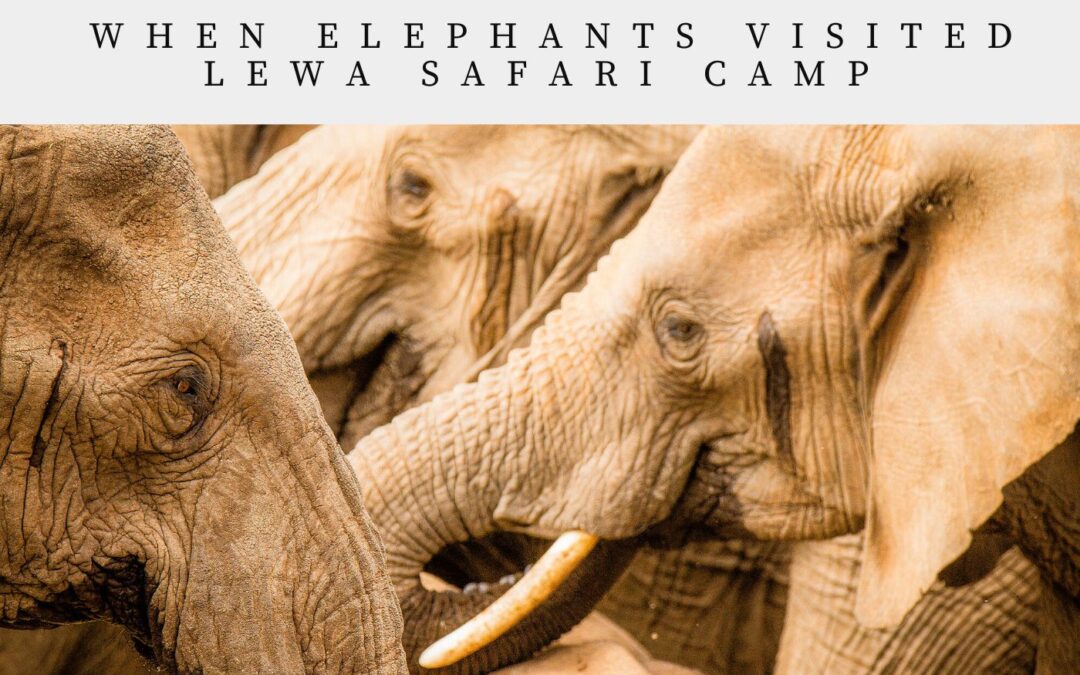
by natashacchapman | Aug 12, 2021 | Everyday life, Wildlife Photography
Let’s talk about safari. Many people have a favourite animal when it comes to what they want to see on safari. A lot of the time it’s lions, leopards or cheetahs, some kind of predator as they have the WOW factor. I understand that of course, it is exciting to see a lion, well initially it is, and then you realise that you have spent the past 20 minutes staring at a pride of sleeping lions when the only shot you can get is on the side of its face hidden in the tall grass.
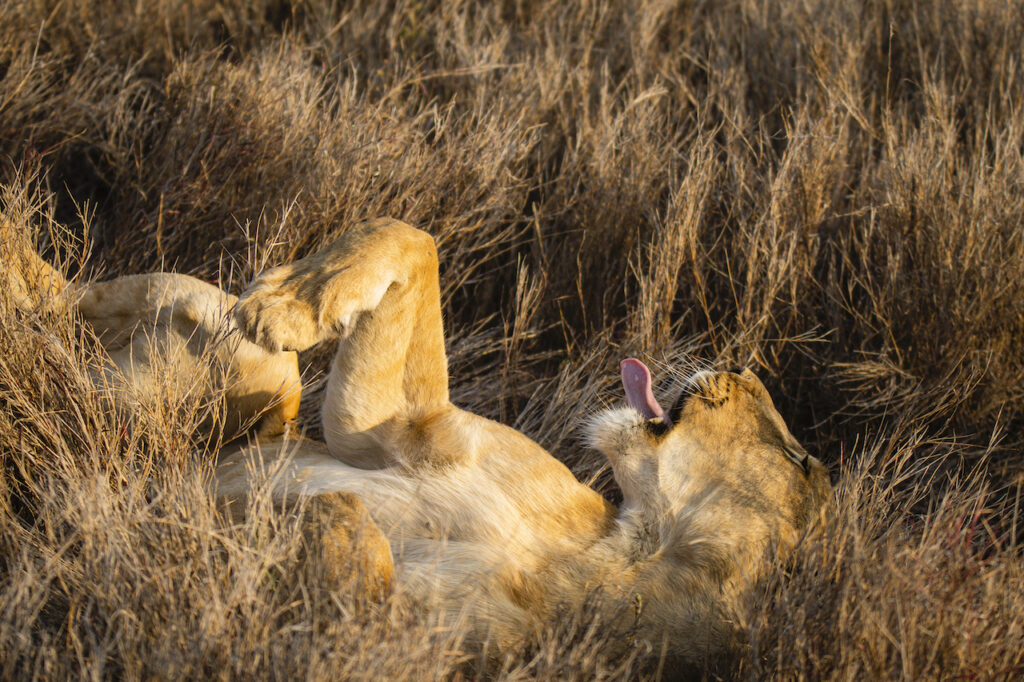
Don’t get me wrong, witnessing and getting those shots when the members of the pride greet each other or the lion cubs playing or that iconic yawning shot is very exciting, but with lions, it’s usually 5 minutes of action, which you had better not miss, and 30 minutes of sleeping.

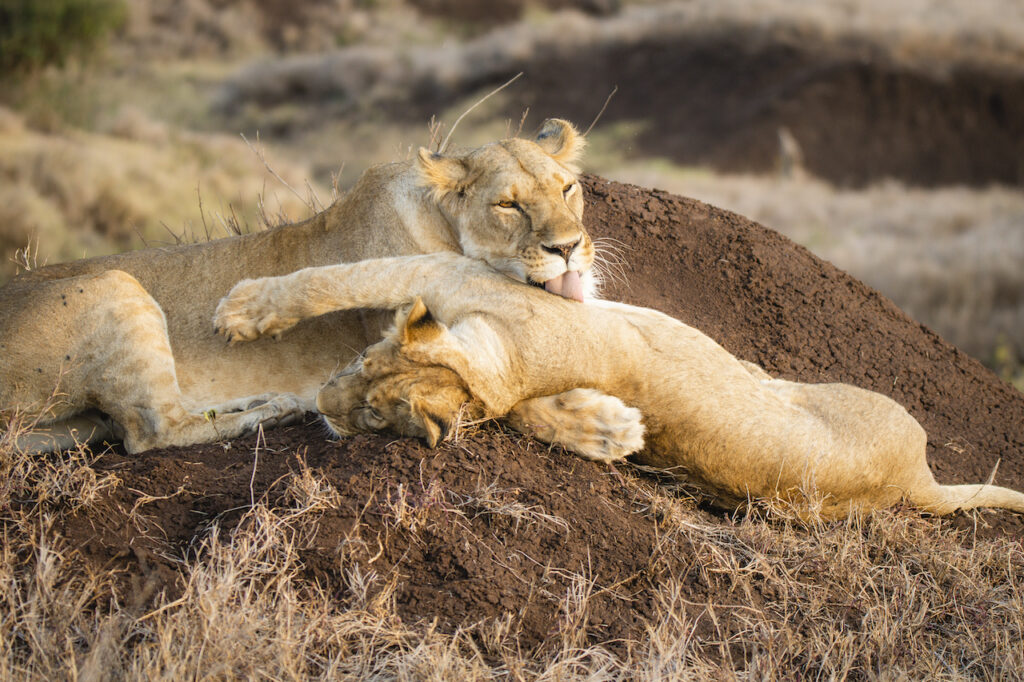
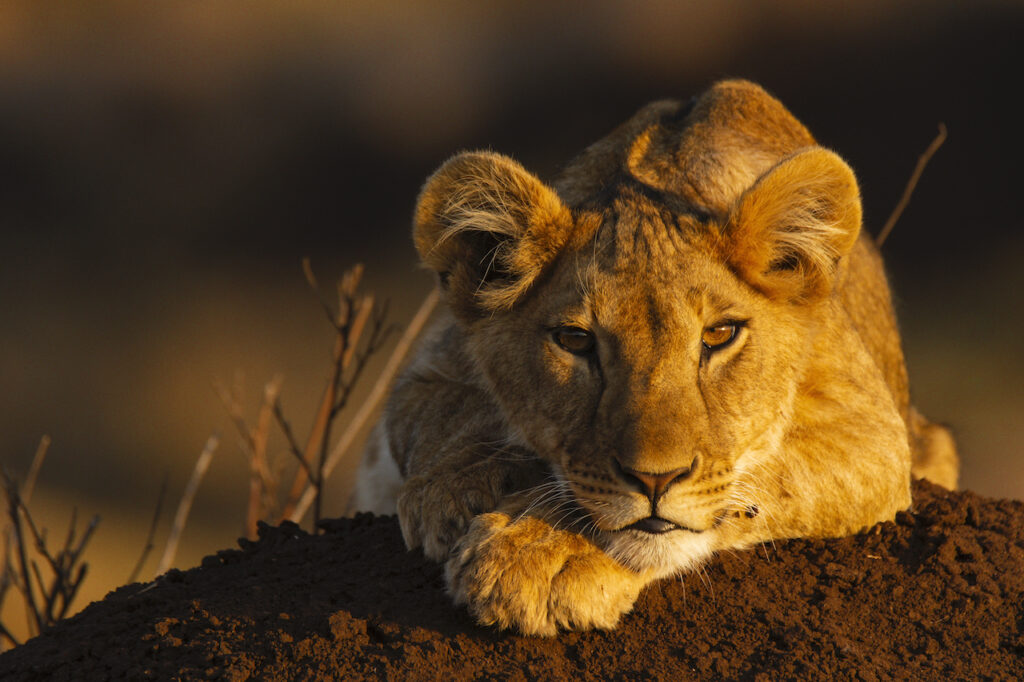
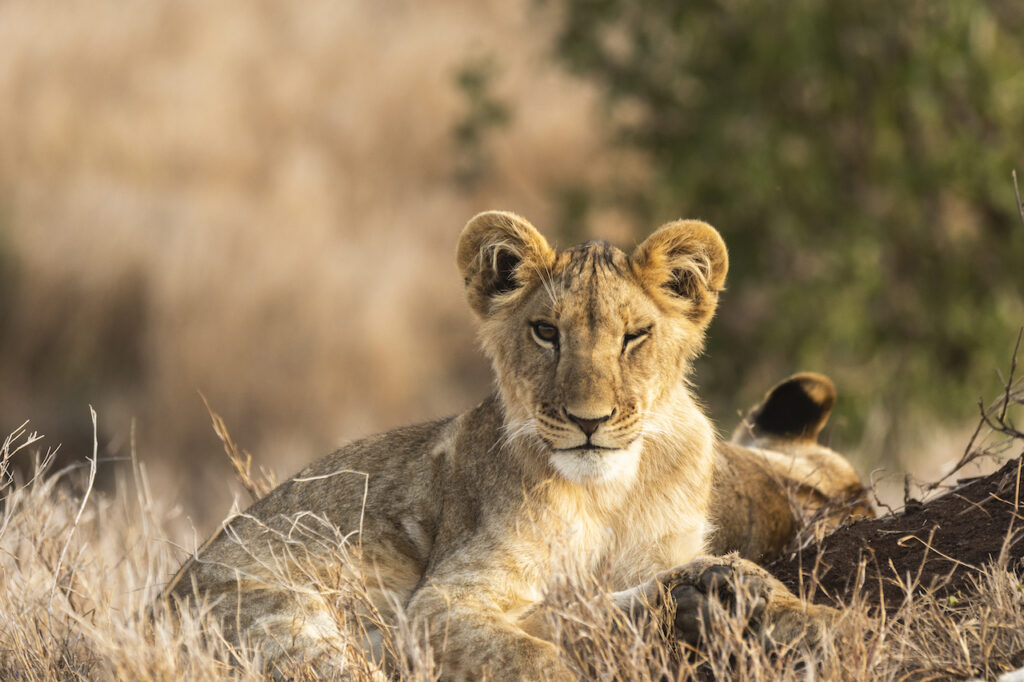
The same applies to Cheetah and leopards a lot of the time it’s a shot of them sleeping or resting, preserving their energy for their hunt.
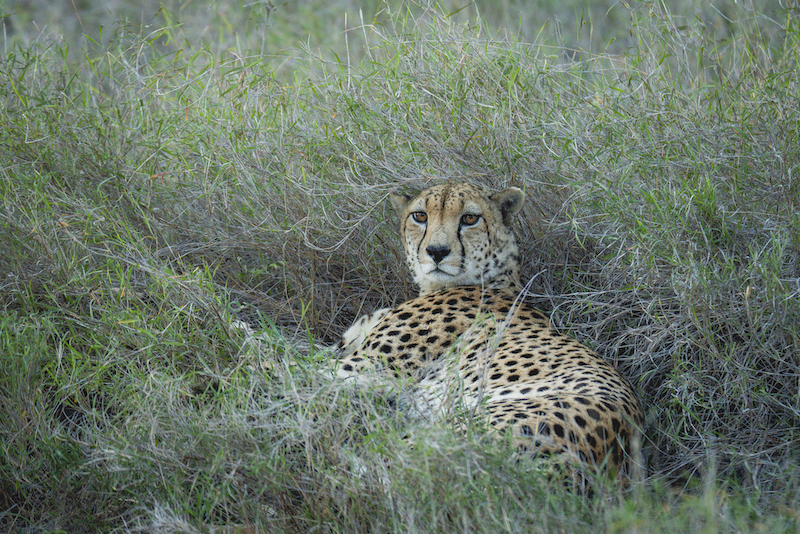
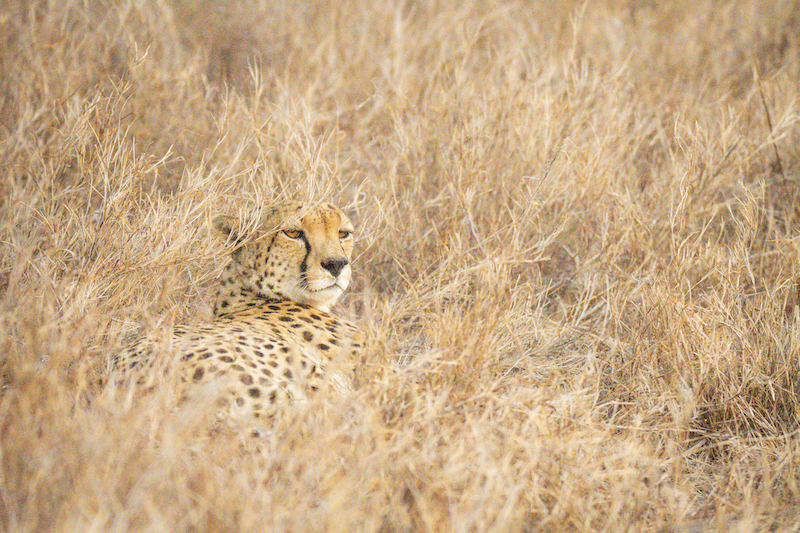
However, with patients, you sometimes managed to get some kind of action shot, for example, a shot of a cheetah with Mount Kenya in the background
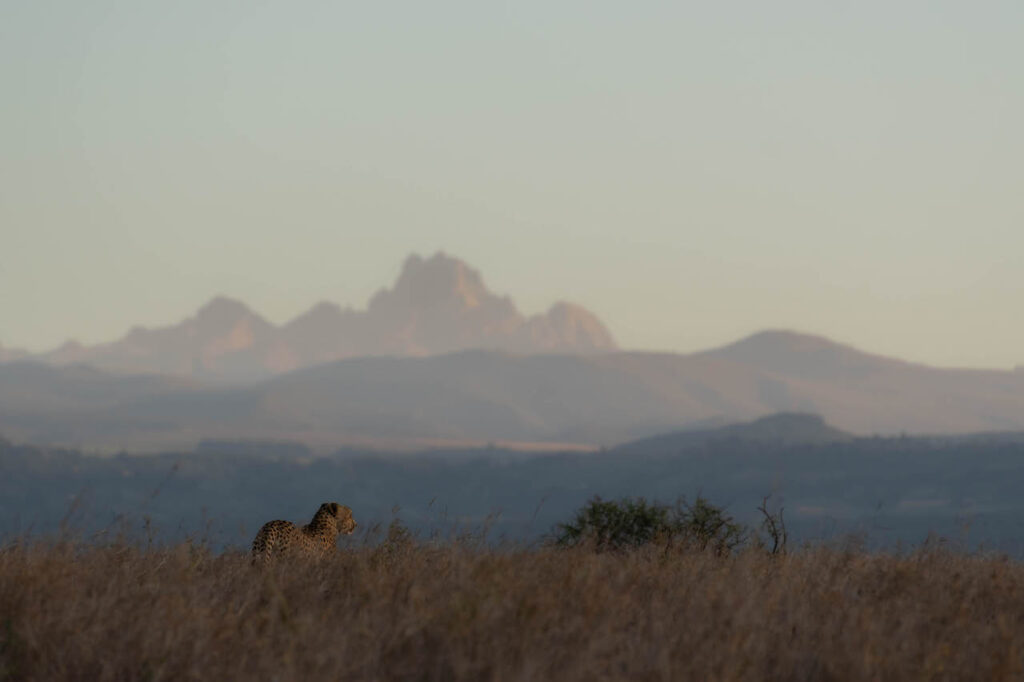
Or a scene you can turn into an artistic low key shot:
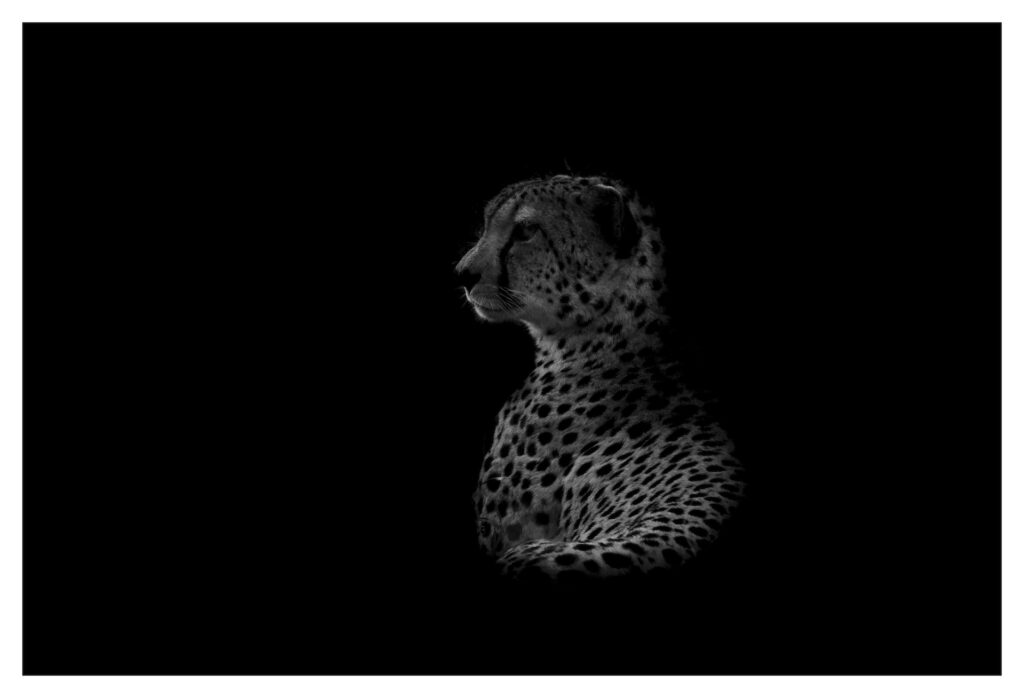
But the chances of seeing action when observing predators is quite low. I have lived in Africa for 7 years, been on countless safaris and in my lifetime I have seen one successful lion hunt, and one failed hunt, one successful cheetah hunt (a VERY long way away) and maybe 3/4 predators with kills that they had already made. While of course, these were amazing experiences, this is the exception rather than the rule. The likelihood of seeing some action is not really in your favour.
Let’s Talk About Elephants
If action and entertainment are what you are looking for when on safari then elephants are the animals for you. Yes, elephants do spend around 80% of their time grazing but during that time there is always a lot more going on. Elephants live in herds led by a dominant female called the matriarch. The matriarch is the oldest and wisest female of the group, she leads the herd to their feeding ground, to water and generally looks out for everyone’s safety.
Within the herd, there are usually one or two young calves. Depending on the age of the babies they are sometimes difficult to spot, very young calves (below one year) will still fit under their mother’s belly and spend all of their time close to her and usually shielded by the rest of the herd.
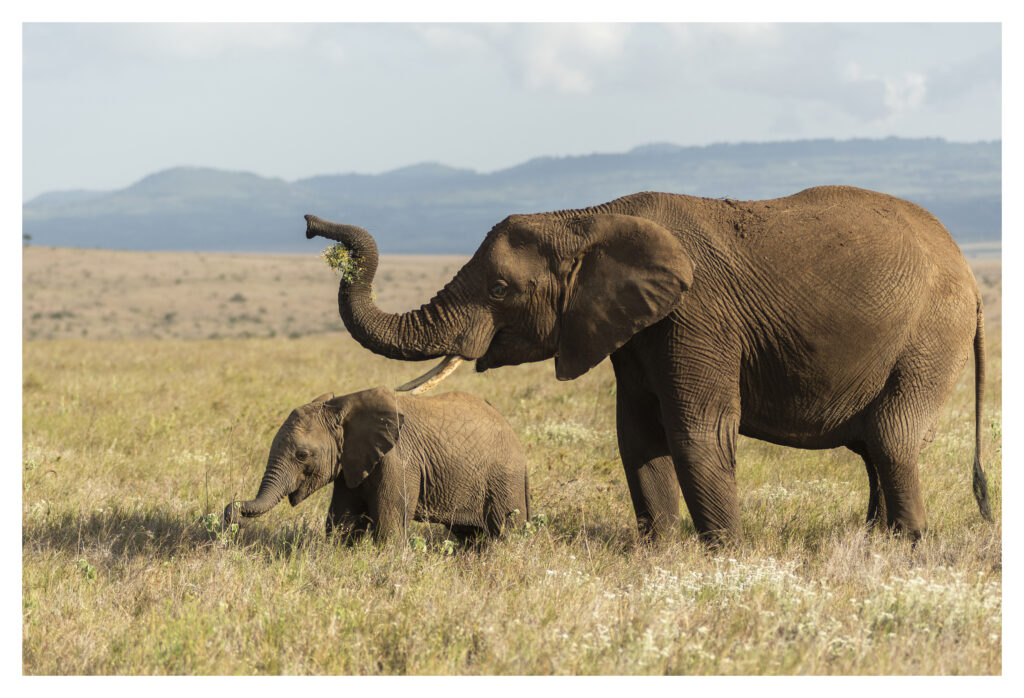
As they get a bit older they venture a bit further away and they are endlessly entertaining to watch, especially when they have not yet figured out how to use their trunk.


There will also be some adolescents who still at times play with the younger calves, or tussle with each other, especially younger males as they wrestle to test their strength. The adolescents are usually the ones to show you how big and strong are by flaring their ears and doing a mock charge at you to show you who’s boss.
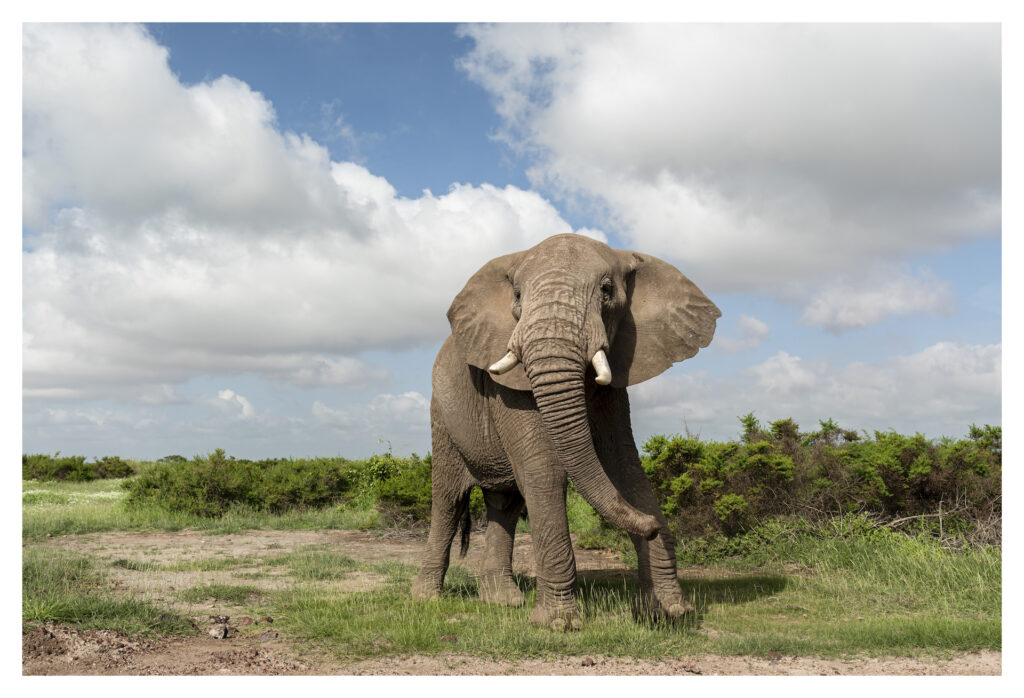
When these bulls (males) become a bit older (around 12 to 15 years of age) you will find them on the outskirts of the herd. Bull elephants are slowly pushed away to prevent inbreeding within the herd, but they are sometimes reluctant to leave the safety of the group. The outcast males eventually go off on their own and roam alone. They are kept in good behaviour by the dominant bull in the territory who gets breeding rights with the females. Eventually, the young bulls will challenge the dominant male to try and win breeding rights.

Elephants are such gentle giants, you will be amazing at how a whole herd of 2-7 ton mammals can move so silently and quickly through the bush, you can literally lose sight of a 10+ strong herd in a matter of minutes.
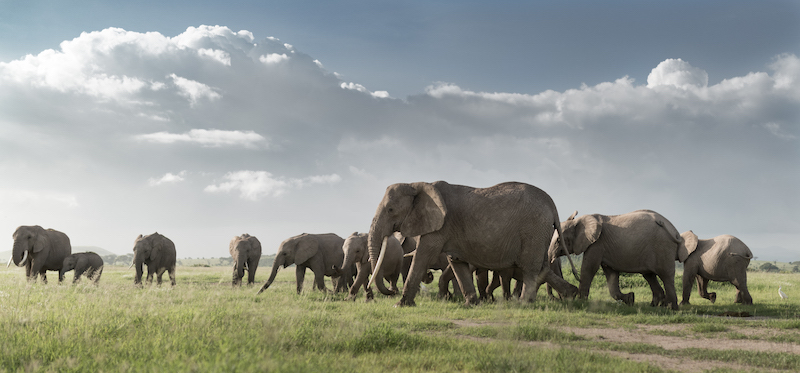
It is also fascinating to watch their feeding habits when the adults reach up to the branches balancing on their hind legs to bring down food for the smaller elephants,
They also use their feet to dig up the root of the grass and then hit the grass against the floor or their tusks to knock the soil off, this prevents unnecessary grinding down of their teeth as much as I’m sure it also doesn’t taste great. As I said there is always something interesting to see when watching elephants and the following image is one of my personal favourites as it is so unusual, this particular ele had a persistent itch and found the perfect tree to be able to scratch it:
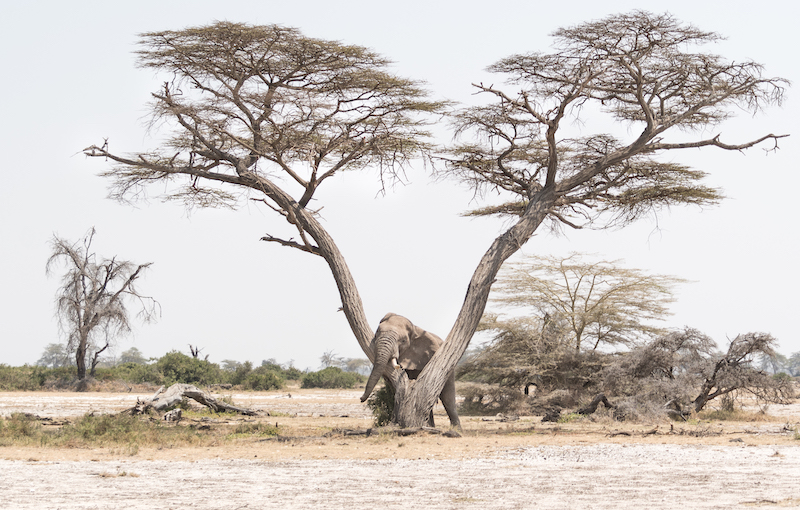
One of the best times to observe elephants is when they are by water. At the first sight of water they often get so excited they can’t help but trumpet and run towards it. When drinking they are able to suck up around 10 litres of water in one trunk full. At a waterhole, you can often see the social structure in action as the matriarch is the first to drink and decided when it is time to move off. Once they have finished drinking they then enter the water and splash around and wrestle or splash water over themselves to cool themselves down. An elephant is fortunate to not have and predators that are able to take them down (besides humans) so they are able to spend time enjoying life and securing social bonds. I can spend hours watching elephants and never get bored.
This video was taken in Randelin Wildlife Management Area, just outside Tarangire National Park, Tanzania where Tarangeri Tree Tops is located
This is a great way to observe elephants as it allows you to get close without being obtrusive or putting yourself or the elephants in danger. It also gives great opportunities for unique low angle photos.
Recently a herd of elephants camp to the camp to visit. The waterhole at camp had just been fixed and the elephants could obviously sense this and they were coming to get the first taste. The herd walked past the entrance to the lodge and followed the fence around until they got to the water. This gave me a fantastic opportunity to be on foot (safely behind an electric fence) while they walked past. I was lying on the ground to ensure the best angle to give the elephant the status it deserves. From a game viewer, the elephant is undeniably impressive but from the ground level, there is nothing more intimidating than a herd of elephants marching less than 50 yards away from you.
Once around the other side of camp, they made straight for the waterhole and spent around an hour drinking, feeding and cooling off, much to the guest delight at they had their afternoon tea. Here are some of the shots (available as fine art photographic prints) taken on the day:
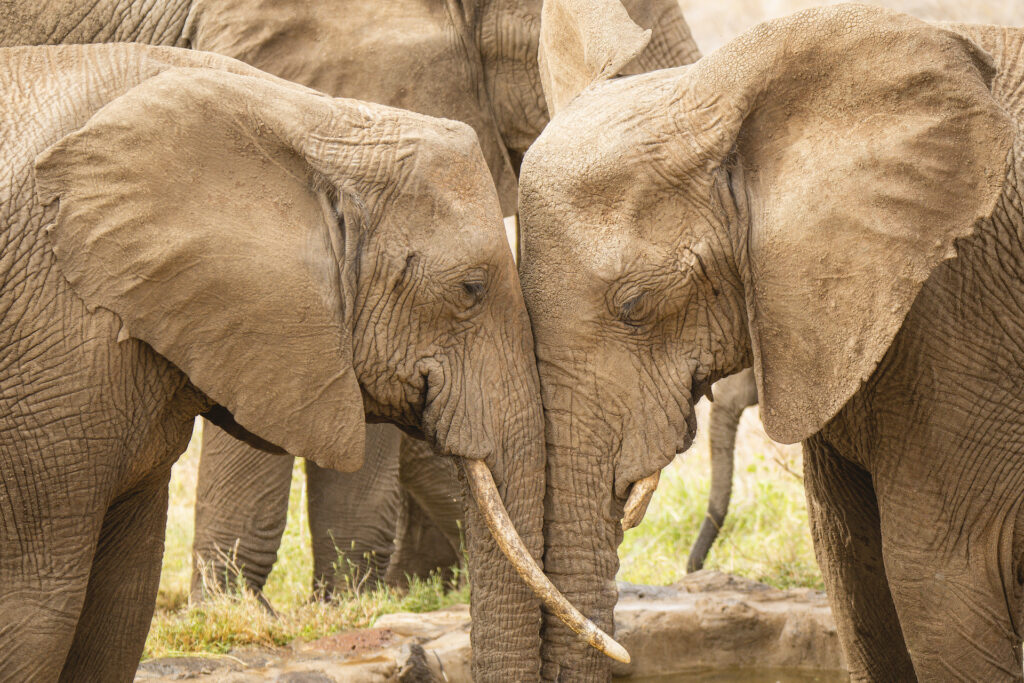
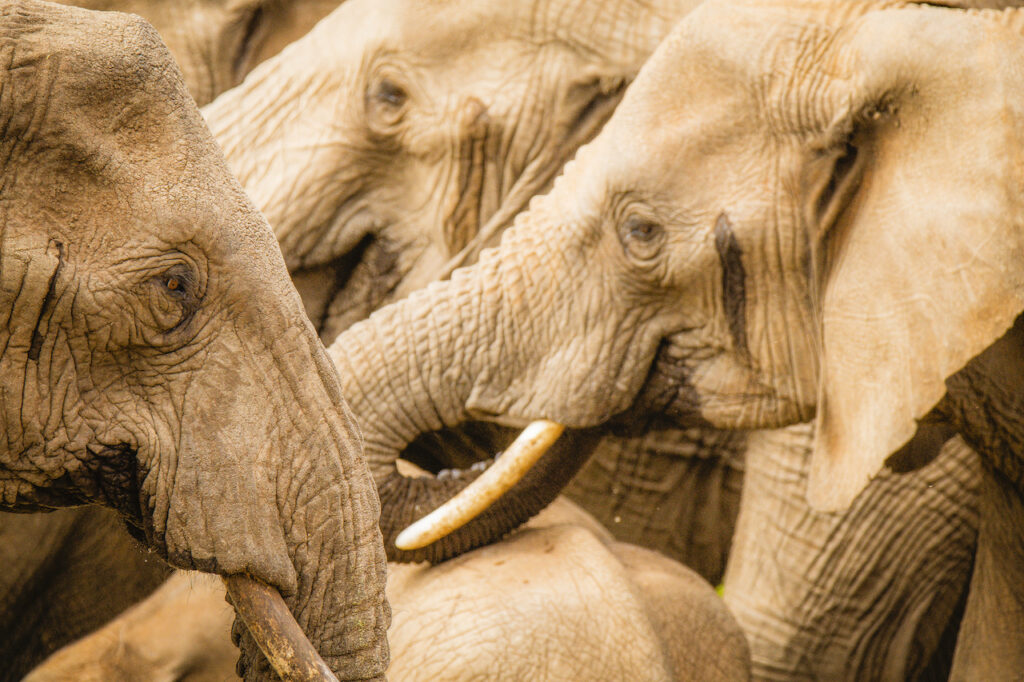
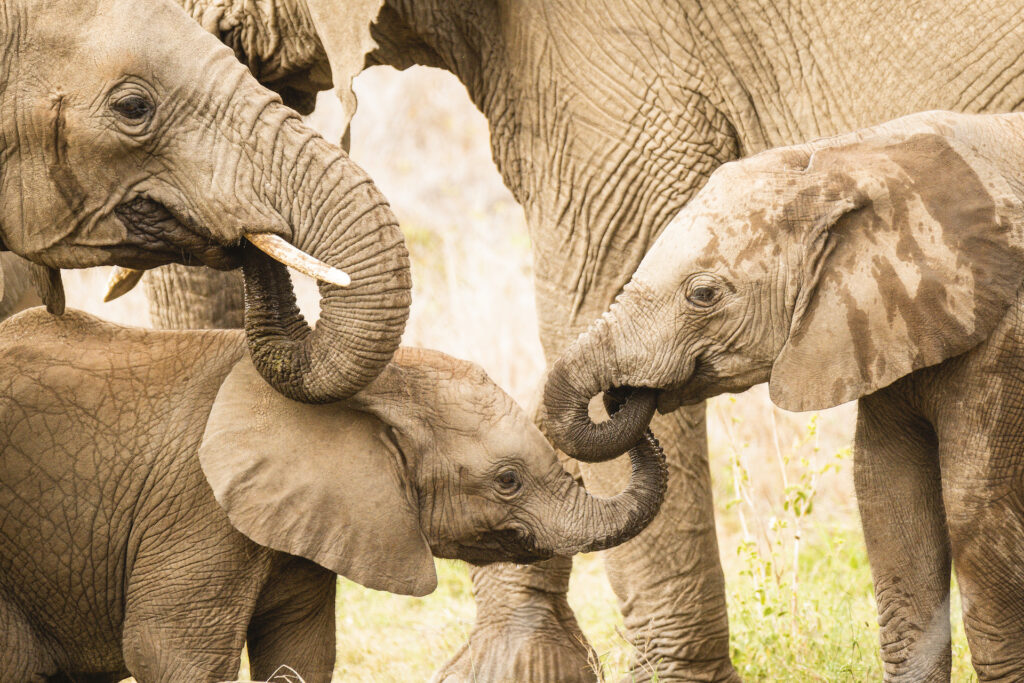
If elephants are your favourite animals are elephants and you are looking for the best places to see elephants then I recommend 2 places, in particular, one is Tarangire National Park in Tanzania, for that luxury trip you can stay at Tarangire Tree Tops and Chobe National Park in Botswana. I personally have been to both of these places (Tarangire on many occasions) and have never been disappointed.
With regards to reading more about the social structure of elephants or just learning a bit more about them from an expert then I recommend reading ‘The Elephant Whisperer’ by the late Lawerence Anthony it’s an amazingly touching story about his life with a herd of troublesome elephants on his conservancy in South Africa:

The sequential book ‘An Elephant in my Kitchen’ by Lawrences’ wife Françoise Malby-Anthony is the story of how she continues her late husband’s conservation work, expanding to caring for not only orphaned elephants but also orphan rhinos, and the consequential lessons she learnt about ‘love, courage and survival’ is also definitely worth a read.

Check out other images available for purchase as fine art, sustainable photographic prints delivered straight to your door:
-Colour collection
-Black and white collection
-Dark Collection
-Light Collection
-Nursery Collection






























